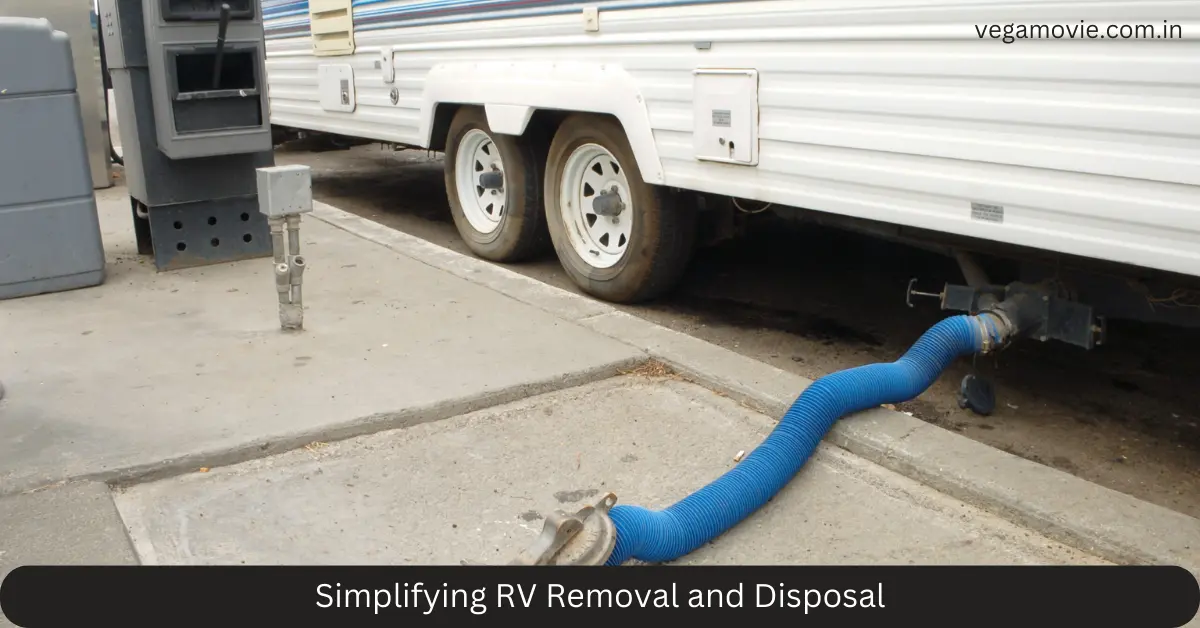Recreational vehicles (RVs) offer freedom and adventure, but when it’s time to part ways with an old or unwanted RV, the process of removal and disposal can feel daunting. Whether your RV has reached the end of its life, is no longer in use, or is simply taking up space, finding an efficient and eco-friendly way to remove and dispose of it is essential.
This guide explores the challenges of RV removal, the best practices for disposal, and how to make the process as hassle-free as possible.
Why RV Removal and Disposal Can Be ChallengingSize and Weight
RVs are large, heavy vehicles that require specialized equipment and transportation for removal. This makes the process more complicated than disposing of a standard car or truck.
Complex Materials
RVs are made from a mix of materials, including metal, plastic, glass, and wood, many of which require proper sorting for recycling or disposal. Hazardous materials such as batteries and old fuel add another layer of complexity.
Legal and Environmental Considerations
Improper disposal of an RV can result in environmental harm and legal penalties. It’s crucial to comply with local regulations and ensure the vehicle is disposed of in an environmentally responsible manner.
Steps for RV Removal and Disposal1. Assess the Condition of Your RV
The first step is to evaluate the RV’s condition. Is it still operable? Could it be sold or donated? If it’s no longer functional, consider whether parts can be salvaged or recycled.
2. Explore Removal Options
There are several options for removing an unwanted RV:
- Sell or Donate: If the RV is in good condition, consider selling it to a private buyer or donating it to a charity or nonprofit organization. Many groups can repurpose RVs for housing or other needs.
- Scrap or Recycle: If the RV is no longer functional, contacting a recycling or scrapyard is a responsible choice. Many facilities accept old RVs and repurpose their materials.
- Hire a Removal Service: Professional RV removal services specialize in dismantling and disposing of RVs, ensuring compliance with environmental regulations.
3. Prepare for Removal
Before removal, remove personal belongings and hazardous materials, such as propane tanks, fuel, and batteries. Ensure all documents, such as the title and registration, are in order.
4. Partner with Experts
Professional removal companies streamline the process by handling transportation, dismantling, and disposal. They ensure the vehicle is disposed of in an eco-friendly manner, reducing the burden on you.
The Importance of Eco-Friendly Disposal
RVs contain materials that can be harmful to the environment if not properly managed. By opting for eco-friendly disposal methods, you help minimize waste and conserve valuable resources. Recycling components like metal, glass, and electronics not only reduces landfill waste but also supports sustainability.
How to Choose the Right RV Removal Service
When selecting a removal service, consider the following:
- Experience: Look for companies with expertise in RV removal and disposal.
- Eco-Friendly Practices: Choose a service that prioritizes recycling and responsible disposal.
- Transparency: Ensure the service provides a clear outline of costs and processes.
- Customer Reviews: Check testimonials to gauge the company’s reliability and customer satisfaction.
Final Thoughts
RV removal and disposal don’t have to be overwhelming. By exploring options like recycling, hiring professionals, and prioritizing eco-friendly methods, you can responsibly part with your RV while minimizing your environmental impact.
Whether it’s freeing up space or making room for a new adventure, handling RV disposal the right way ensures that the process is smooth and stress-free. If you’re ready to part with your RV, take the first step by assessing your options and reaching out to experts who can guide you through the process.

